Growing herbs at home has never been easier or cleaner than with water-based gardening. If you love fresh herbs but hate dealing with soil mess or limited space, growing herbs in water can be the perfect solution. This simple, sustainable method allows you to enjoy a constant supply of flavorful greens right from your kitchen window. Let’s explore how to grow herbs in water, step by step, and learn which herbs thrive best in this setup.
Understanding Water-Based Herb Growing
Growing herbs in water, also known as hydroponic propagation, is an age-old practice that allows plants to thrive using just water and sunlight. Instead of soil, herbs rely on water to deliver essential nutrients directly to their roots. This method is not only tidy and space-saving but also surprisingly efficient. It’s ideal for people living in apartments, dorms, or homes with limited outdoor space
Choosing the Right Herbs
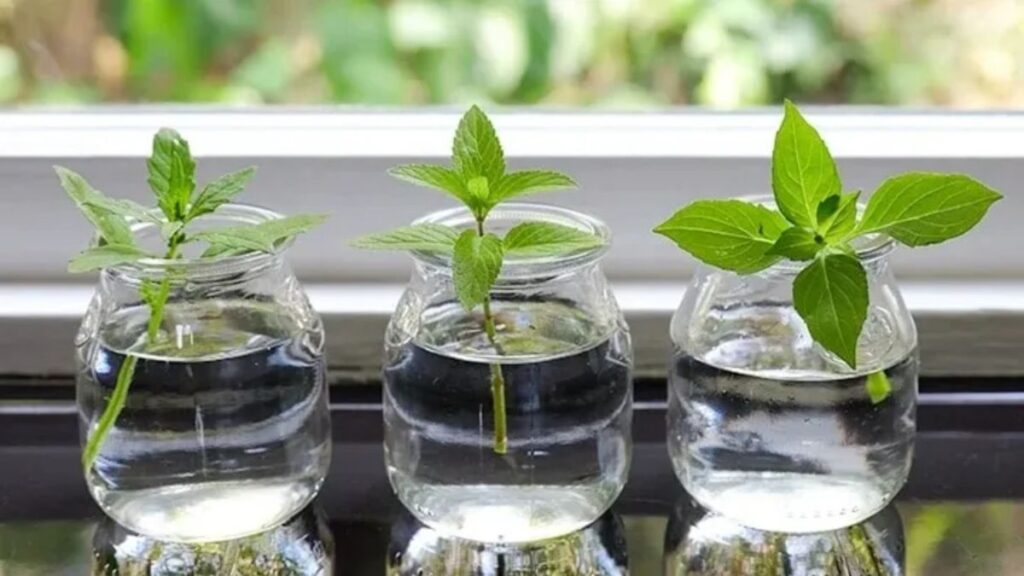
Not all herbs grow equally well in water. Some adapt quickly and start producing new leaves within weeks, while others might struggle. The best herbs for water-growing include basil, mint, oregano, rosemary, thyme, sage, green onions, and cilantro. These herbs naturally propagate through stem cuttings and maintain their flavor and aroma even when grown without soil.
If you are just starting, try fast-growing herbs like mint and basil. They are forgiving, root easily, and grow well in various light conditions. Once you get comfortable, you can experiment with more delicate herbs like parsley or dill.
Selecting and Preparing Cuttings

To begin, choose healthy herb stems from a mature plant. Look for non-flowering stems with fresh leaves and no signs of damage. Cut a 4 to 6-inch stem just below a leaf node, as this is where roots will form. Gently remove the leaves from the lower part of the stem to prevent rotting once it’s submerged in water.
If you buy herbs from a grocery store, make sure to select stems that are still firm and green. After trimming them, rinse the stems gently under cool water to remove any dirt or residue.
Setting Up the Containers
You don’t need fancy equipment to grow herbs in water. Simple glass jars, mason jars, or recycled bottles work perfectly. Clear containers are great for monitoring root growth, but if you notice algae buildup, you can switch to darker glass or wrap the container in paper to block out sunlight.
Fill the container with clean, room-temperature water preferably filtered or dechlorinated. Tap water can be used if you let it sit for 24 hours to allow chlorine to evaporate. Place your herb cuttings in the jar, making sure the nodes are submerged while keeping the leaves above water.
Finding the Right Spot
Light plays a major role in the growth of your herbs. Place your jars in a bright location where they can get at least six hours of indirect sunlight each day. A sunny kitchen windowsill or a balcony ledge is ideal. Direct harsh sunlight can heat the water too much and stress the plants, so bright but gentle light is best.
If you don’t have enough natural light, use a small LED grow light to keep your herbs thriving. Rotate the jars every few days to ensure even exposure to light and prevent one side from growing unevenly.
Changing Water and Maintaining Health
Water maintenance is the key to keeping herbs healthy. Change the water every three to five days to prevent stagnation and algae growth. Each time you replace the water, rinse the roots and the container lightly.
Adding a few drops of liquid plant fertilizer every two weeks can help boost growth, though it’s not strictly necessary for short-term use. Be cautious with over-fertilizing, as it can harm the delicate roots. You’ll know your herbs are healthy if the roots are white and firm. Brown or slimy roots indicate a need for fresh water or trimming.
Watching for Root Development

Within a week or two, you’ll start seeing tiny roots forming near the nodes. Once the roots reach around two inches, your herbs are established and ready to produce new leaves. At this stage, you can start harvesting small amounts for cooking.
Regular pruning encourages growth and prevents the stems from becoming too tall or thin. Always use clean scissors when cutting herbs to avoid spreading bacteria.
Enjoying and Harvesting Fresh Herbs
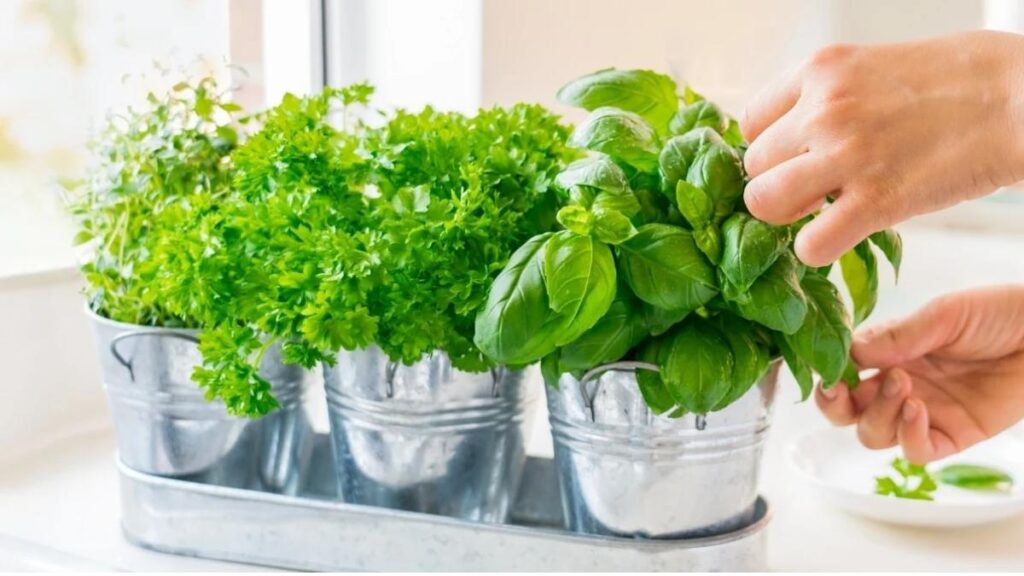
Growing herbs in water provides a steady supply of fresh greens right at your fingertips. You can snip off a few leaves whenever you need them for tea, garnishing, or seasoning dishes. The taste remains vibrant and aromatic, just like soil-grown herbs.
For continuous growth, avoid harvesting more than one-third of the plant at once. This allows your herbs to recover and produce new shoots.
Advantages of Growing Herbs in Water

The benefits of this method go beyond convenience. Growing herbs in water eliminates the mess of soil, reduces pest problems, and allows you to easily monitor plant health. It’s an eco-friendly approach since you can reuse water and containers indefinitely.
Additionally, this method makes indoor gardening accessible year-round. Whether it’s winter or summer, you can have lush herbs growing inside your home with minimal effort.
A Sustainable and Rewarding Practice
Growing herbs in water isn’t just practical; it’s also a peaceful and fulfilling activity. Watching roots develop and leaves flourish adds a touch of nature to your indoor space. It’s a great way to connect with your food and promote a greener lifestyle.
With the right care and a little patience, you can transform your kitchen into a mini herb garden that provides fresh flavor for every meal. No soil, no mess just clean, fragrant greens growing right before your eyes.
Final Thoughts
Growing fresh herbs in water is an easy and enjoyable way to bring nature into your home. It doesn’t require expensive tools, large space, or gardening experience. With only a few jars, clean water, and a sunny spot, you can create a constant supply of herbs that brighten your dishes and freshen your surroundings. Whether you’re a beginner looking to start small or an experienced gardener trying a new method, this approach offers simplicity, sustainability, and satisfaction. It’s proof that nature doesn’t always need soil to flourish just a bit of care, light, and love.
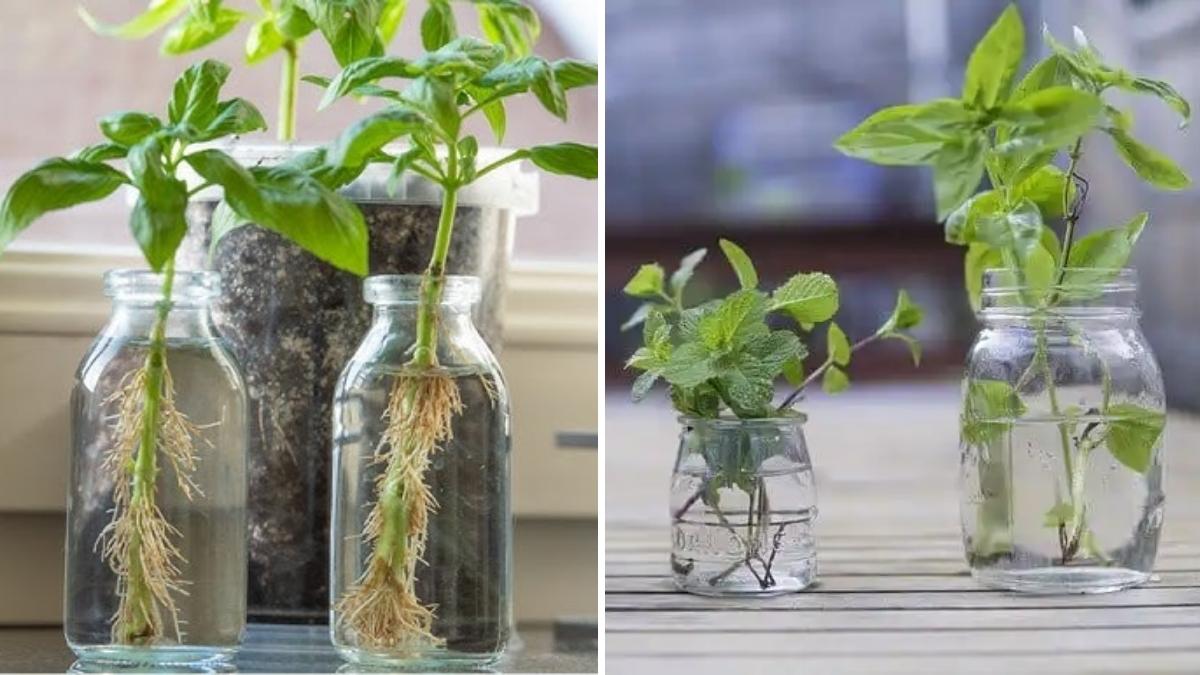

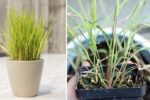
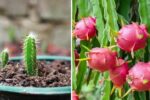
Thanks so much for the teaching indoor gardening. I learnt so much and am ready to try growing some of the vegetables